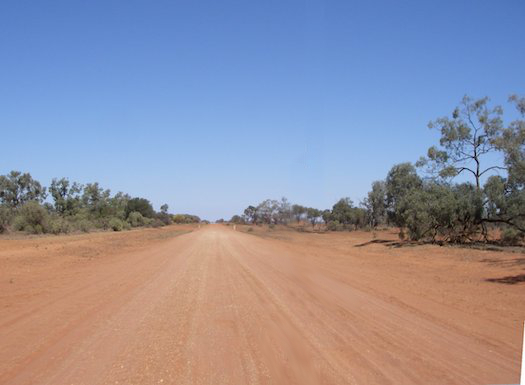Opinion from Brad Smart
One of the biggest gripes I see popping up on the radio forums on social media is about the way regional commercial radio operators now run their stations and the lack of announcers.
They’ve certainly become a target.
I guess most of these comments are posted by people who have had bad experiences along the way with some of those regional operators.
Many of the posts are quite vicious and vindictive, but in some cases, I’m sure the writers think they’re more than justified.
Unfortunately, like computer jobs going to India, there’s a reality that has to be faced when it comes to creative jobs in radio and a lot of those expectations are steeped in radio history.
In the early seventies, when I started at 3TR in Sale in the old fibro house in Stawell Street, announcers manned the turntables from five in the morning until midnight.
The technology of the day wouldn’t allow anything else.
Being forced into ‘live’ programming meant there were plenty of jobs for announcers, and many roles for sales people.
3TR also had technical staff, as did most regional stations, even in the smallest markets. In fact, in those days, I think it may have even been mandatory.
Throughout the seventies and eighties, regional AM radio stations were pretty much the only game in town. They completely dominated their markets with live content and could support a large staff.
Local newspapers also did well back then, but if, as an advertiser, you wanted to talk to your potential customers, there was only one place to turn – radio. That pulling power meant ‘rivers of gold’ flowed to regional operators like the Albert family, the Lamb family, Associated Broadcasters, VBN, Queensland’s Color Radio group and many others.
But, that was yesterday, and like it or not, yesterday’s gone!
In 1992, the government reformed broadcasting.
Many things had changed in the prior 70 years that radio had been on-air, and legislation simply hadn’t kept pace.
I can still remember having an old valve record player when I was growing up. Its scratchy audio fell so far short of being broadcast quality it was laughable. But, by 1992, digital technology had well and truly arrived, and compact discs had been playing in our cars and homes for at least 6 years. Even those first domestic CD players exceeded broadcast specs by such a margin, that it barely warrants discussing.
By the nineties, IBM and Apple computers were a decade old, and becoming so affordable they were making their way from office desks into the homes of ordinary people, and personal devices, like iPods and iPhones were just around the corner.
It was time for the Broadcasting Services Act to modernise Australian radio for the 21st century.
Annual technical inspections of radio stations went the way of the Do-Do. One by one techs were shown the door, until in the smaller stations, there were all gone. Technical work could be outsourced.
As a result, broadcast techs, particularly with AM experience, are as rare as hen’s teeth, because no one wants to be trained for jobs that no longer exist.
Within just a couple of years, domestic CD players began to replace turntables and even reel-to-reel tape recorders in the studios. Every station had them, but they still needed announcers to use them.
However, lurking in the shadows was the real enemy to creative employment in regional radio, and it would change history!
While some early computer automation systems had been developed in the eighties, they were built on proprietary hardware and were outrageously expensive. Only the big stations in capital cities could afford them. It was when cheap IBM-compatible computers arrived on the scene, that regional broadcasting would change the way it handled on-air programming forever. Before long, low-cost automation programs for the radio industry were freely available.
The nineties became the era of the programmer in radio – the computer programmer, that is.
Computerised traffic systems and music selectors slashed the numbers of backroom staff in radio stations like a hot knife going through butter.
For just a few hundred dollars, digital audio editing software made regional production departments more efficient and that, of course, meant fewer people. By the end of the 1990s, the internet and satellite technology had paved the way for new low-cost centralised production hubs, as well as long-form program distribution and news syndication.
Working away in the background and keeping a low profile, farsighted entrepreneurs began quietly buying up stations, forming new networks, as they gobbled up older radio networks that were resistant to change.
Today, the idea of a single commercial radio station being owned independently has all but disappeared.
Radio stations soon began to be seen as a commodity and were bought and sold for high multiples of their operating profits. Like houses in today’s property market, they now sell for a disproportionate amount of money compared to average earnings.
To be in the running for even the smallest of radio stations, you have to have access to at least a million dollars. If you want to buy a station in a quality market, you may have to part with three to ten times that amount. It’s a big hunk of change, particularly if you have to borrow it!
Repayments to banks and finance companies can be up to $10,000 per million per month. That’s well out of the reach of most of those individuals, who dare to dream of becoming an independent owner. To afford these prices, you’ll find that most buyers either have to be a public company using shareholders’ capital, or an existing industry player who’s been around for decades. These existing operators usually have stations that are already fully owned, and they use the cashflow from them to service bank debt on their new purchases.
When a high-performing regional station comes up for sale, industry buyers compete with each other for the chance to bring that station into their network. In doing so, they often push the purchase price to a level that would be almost impossible for any first-time buyer to sustain.
I think finally the day of the independent operator is gone. The radio market is becoming more concentrated. In fact, with financing, it’s cost prohibitive to run a standalone regional commercial radio station these days. Networks, with centralised management, have become the only option.
When they take on additional debt, the only way networks can make their newly acquired stations viable is to slash expenses and centralise operations. They’ll often call that ‘synergising’ – but really, it’s code for throwing surplus people under the bus.
Personnel is the biggest expense for any radio station. The more people a station owner can rid themselves of, while still maintaining a reasonable quality program to air, the better they’re placed to meet their financing obligations.
So, you might say, why do they need to continue growing?
Well, the answer to that is complex and is getting more intriguing every day. It’s all about economies of scale.
To be clear, commercial radio isn’t necessarily the ‘boogie man’ here.
Since the onset of digital technology, especially reliable access to the internet, traditional media has been facing competition worldwide, that it never thought it would have to face.
You might remember around 1999, we started to hear news filtering in from the U.S. that traditional newspaper circulation was starting to slide. Within a few years, newspapers began to shed highly experienced staff. Many of those journalists couldn’t find work in other newspapers, so they set up their own news sources in the on-line space, giving rise to websites like Huffington Post, Buzzfeed and the Daily Mail. This accelerated the problem for traditional media.
Even here in Australia during the past decade, print outlets started to lose readers week by week, until we finally arrived at the point this year, when scores of regional newspapers closed down their print editions. Hundreds of journalists and backroom staff found themselves at Centrelink.
So, what’s this got to do with regional commercial radio?
Well, there’s only one audience in each market, and the competition from different players for their attention has grown exponentially since the early 2000s.
The pressure on commercial radio hasn’t only come from digital sources, like Google, Spotify and on-line news, but from the huge growth in community stations that have been licensed to regional markets throughout the country. It seems every tiny town across regional Australia has been given its own low-powered community licence, while entire regions are now served by their high-powered cousins.
All these sources are taking revenue out of the markets that once belonged exclusively to the local commercial broadcasters. It may only be a nibble here and a nibble there, but it all adds up.
This pressure on local commercial radio has been like putting a flame under a pan of cold water to cook a lobster. By the time it realises the trouble it’s in, that lobster is in boiling water.
Some regional radio operators have been complacent. Many haven’t responded to the clear and present danger.
I’ve previously believed that holding a commercial broadcasting licence is a very different prospect from owning almost any other type of business.
To me, being entrusted with a public licence always brought with it special responsibilities to provide the best possible information and entertainment for local audiences, even if that was at the expense of profits.
However, I no longer feel quite so strongly about the issue, because regional commercial operators have seen the ground being eroded from under them. Successive governments have quite happily hacked into the viability of commercial stations by continuing to dilute every media marketplace for the past 30 years.
Sure, there’s not much any government could have done about digital technology. New technology is constantly evolving.
However, I view the ongoing obsession with licensing more and more community and narrowcast stations across the nation, as a flawed policy. A decade ago, there were more than enough community outlets for our relatively small population – but ACMA, under successive governments, has continued to issue licences.
I can understand when people complain that today’s commercial radio isn’t like it used to be. Not many things are.
Many regional markets now only operate with one announcer and that’s usually in the breakfast shift. Most other shifts are voice-tracked or networked. In some SCA markets, they’ve even done away with their local breakfast programs altogether.
It’s a big departure from the days when regional stations employed six or seven announcers, but this the price you have to pay if you want to have access to more competition.
As a radio creative looking in from the outside, it’s true that there are now fewer opportunities.
However, I don’t believe anyone should publicly spurn the decisions of today’s regional radio executives, until they’ve ‘walked a mile in their shoes.’
Each day, they face shareholders or owners pushing for greater profits to pay them back for the capital they’ve invested, or nervous bankers wanting to constantly review the network’s figures to ensure they can continue to meet their obligations.
Even regional radio is now big business, and choices have to be made. Finance, unfortunately, trumps creativity every time.
Would I like radio to go back to how it was? Sure, I’m a romantic at heart, but going back in radio is never going to happen. What’s been done, can’t be undone.
I think what people have been saying about COVID is also true for radio ‘we’re now living in a new normal.’
No point complaining, we’ve just gotta suck it up.
About the Author
 Brad Smart previously owned and operated the Smart Radio Network through regional Queensland.
Brad Smart previously owned and operated the Smart Radio Network through regional Queensland.
He sold his stations to the then Macquarie Radio Network.
He has been a journalist, broadcaster and film producer for over 30 years.
Brad is available as a freelance writer, voiceover talent and consultant.
Brad’s articles and podcasts are also available through his website www.bradsmart.com.au
Subscribe to the radioinfo podcast on these platforms: Acast, Apple iTunes Podcasts, Podtail, Spotify, Google Podcasts, TuneIn, or wherever you get your podcasts.





The only reason there is a breakfast announcer is because the politicians want to be able to reach the electors in their electorate. This caused the ACMA to have local content rules.
The ACMA changed the rules for AM stations to give them a supplementary FM licence most of which are networked content.
Digital Radio Mondiale in the VHF band has been available to broadcasters for 10 years. The regional broadcasters should have adopted it by now. It would mean that the poor sounding AM could have been swapped for good quality stereo sound and the supplementary "FM" program would have been transmitted by the same transmitter. There is enough data available to use Journaline to produce an electronic newspaper including pictures. The slideshow could also be used for advertising along with program related images. That would be good since rural newspapers are disappearing. The radio station journalist can produce text/images along with reading the news, all live. There is no printing costs and no more transmission costs.
DAB+ used in metro areas could do the same but has filled simulcasts of analog radio and poor sound quality computer replays of various music types and no announcers. How does this type of programming compare to streaming from international sources?
The ACMA should have limited a broadcaster to a maximum of a pair of each program streams so there would be more variety of broadcasters. The transmitters are effectively owned by Commercial Radio Australia.
The author stimulated discussion in a previous post on community radio and regional radio. He raised valid concerns about the inroads made by community radio into the audience of commercial radio. I replied that community radio were acting within the law especially when it came to sounding professional and using professional people to raise funds.
The key is in paragraph 17 of this article, reforming the BSA (Cth). In the previous article, I raised the issue of the extent a regional radio can re-transmit non-regional content. The law says that a regional station is defined as not being within reach of a local GPO and that regional content on regional radio must be local between 0600 and 1800.
If the BSA is to be reformed, which parties are going to lobby for less regional content or more regional content?
I will return to the issue of regional content and community radio.
The author is correct on how technology is reducing expenses and the need to employ staff. The author mentions the purchase of software to edit content and the outsourcing of technical staff. Technology is not limited to software.
Technology can encompass the quality and reliability of equipment required to broadcast. In a similar vein to the suburban TV & radio repair shops of the 1950s and 1960s, valves were frequently replaced and unreliably-connected solder joints were the fare of these TV & radio repair. An example of a dry solder joint is illustrated in the comedy series "Keeping Up Appearances" where Onslow wanted to turn on/off the TV or change channels by banging his hand on the top of the TV cabinet. A dry solder joint is a poorly or loosely-connected component such as a valve, resistor or capacitor to a circuit board and/or soldered and/or screwed terminal.
Then, the equipment used in radio and TV stations had electro-mechanical components such as motors and relays in audio and video magnetic tape machines.
Today, such equipment is only used to replay archival material. That includes turntables and those 'lucky' enough to have 16" transcription players which started playback from the inside.
Thus, when equipment is more reliable in build and quality, and the playback of content is digital, there is less need for the services of permanent technical staff. OK pedants, optical disk players (CD, DVD, Blu-ray, 4K) have motors (stepper motors) which are easily replaceable.
Then there is no need for continuity (for TV) and master control operations. In the TV industry, there has been consolidation in operations needing less staff. For example in 2013, ABC and WIN-TV made a separate entity to outsource their continuity and master control operations from Ingleburn on the outerskirts of Sydney.
Technology could also reduce expenses in the form of transmission mode which reduces the consumption of electricity. Mr St. John in other posts has made the point that the biggest cost in running an AM transmitter is the energy used in transmitting the carrier frequency.
The carrier frequency is constantly operating BUT does not carry the 'information' which is contained in the sidebands. Mr St. John advocates DAB+ in cities and DRM+ in regional areas.
These modes of transmissions require less energy by virtue of not requiring sending and at the same time have capabilities of higher quality audio (depending on the bits per second rate), text and picture information (journaline) and emergency wake up of the receiver.
The issue for digital transmission in regional areas requires the lobbying of the regional broadcasters to our Federal MPs to change the legislation, the BSA (Cth) and the availability of DRM+ receivers in the market place. The main producers of DRM+ receivers are from India and some European countries, source https://www.drm.org/products-2/ .
Returning to the community radio and the parallel with the regional papers. There has been consolidation of over 60 regional newspapers in Australia. Most of these papers are owned by News Corp.
Some may say that regional newspapers are dead.
Community newspapers are taking over where regional newspapers left.
As one 'volunteer' said "It's just getting the news out there to those who cannot get local news," Source, https://www.abc.net.au/news/2020-11-18/volunteer-run-newsletters-thrive-in-regional-areas-with-no-paper/12892854 .
The same could be said for community radio which is run by volunteers. They are providing the news and local content where regional radio cannot afford or does not want to provide.
It may well explain why regional radio is not the "...rivers of gold..." of yesterday.
Thank you,
Anthony of analytical Belfield